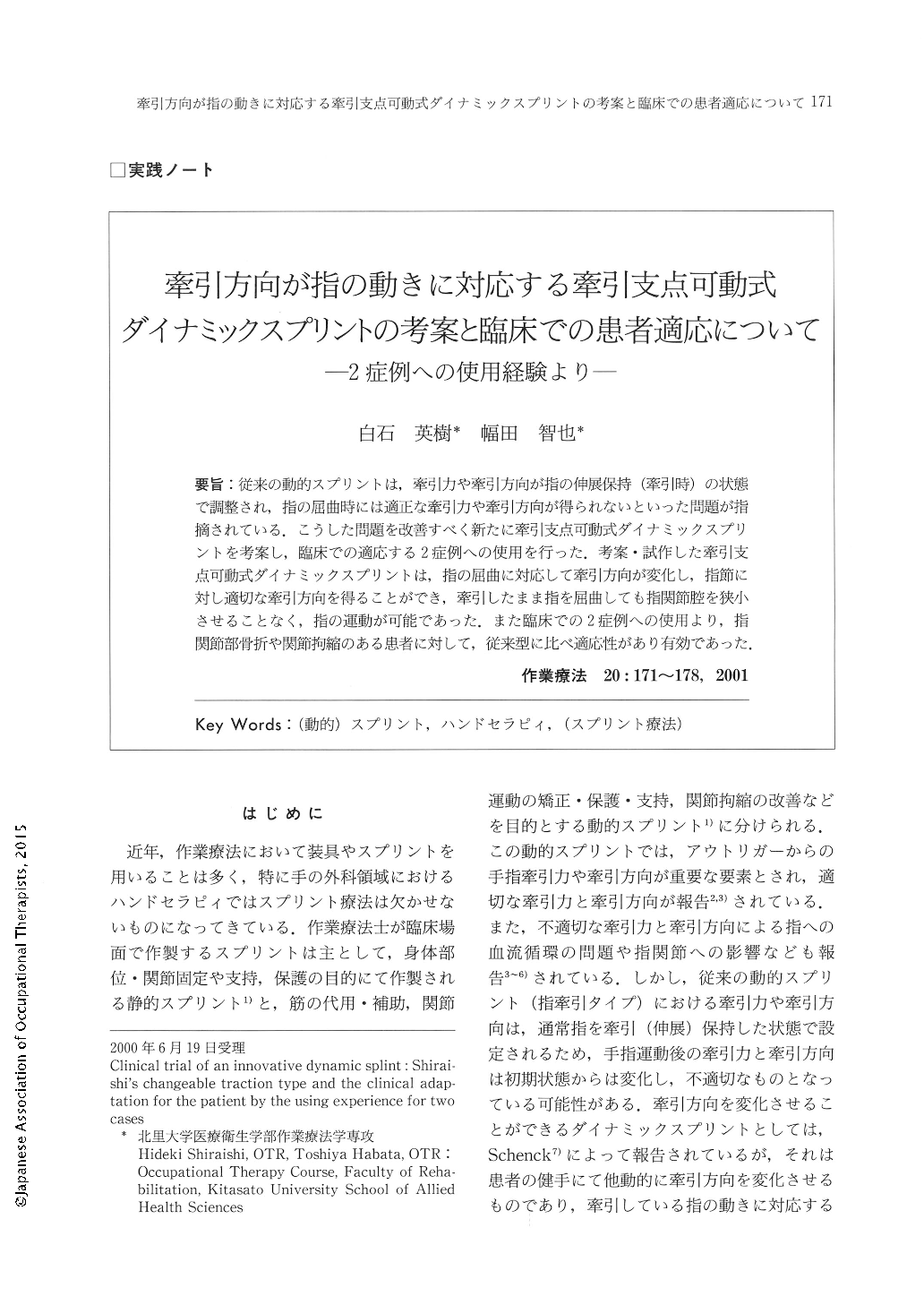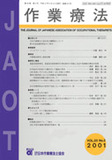Japanese
English
- 販売していません
- Abstract 文献概要
- 1ページ目 Look Inside
- 参考文献 Reference
要旨:従来の動的スプリントは,牽引力や牽引方向が指の伸展保持(牽引時)の状態で調整され,指の屈曲時には適正な牽引力や牽引方向が得られないといった問題が指摘されている.こうした問題を改善すべく新たに牽引支点可動式ダイナミックスプリントを考案し,臨床での適応する2症例への使用を行った.考案・試作した牽引支点可動式ダイナミックスプリントは,指の屈曲に対応して牽引方向が変化し,指節に対し適切な牽引方向を得ることができ,牽引したまま指を屈曲しても指関節腔を狭小させることなく,指の運動が可能であった.また臨床での2症例への使用より,指関節部骨折や関節拘縮のある患者に対して,従来型に比べ適応性があり有効であった.
Recently, the frequency to make a splint in clinical area is increasing, and the splint therapy for hand injured patients is rising in importance.
In dynamic splint, the direction and the force of traction-to-digit is usually set at the extended position of the finger. But the direction and the force cannot correspond to movement (flexion) of the finger. So, when the patient flexes his or her finger with a traditional-type dynamic splint, the direction of traction becomes unsuitable and the force of traction that is increased by finger flexion concentrates on the finger joint. For this reason, the repeating of joint exercise with a traditional-type dynamic splint has some bad influences on the joint of digit and secondary injury may occur with exercise using the traditional-type dynamic splint.
So, I tried to make a new-type dynamic splint (an innovative dynamic splint: Shiraishi's changeable traction type). The changeable traction-type dynamic splint can change the direction of traction to the finger and can solve the problem of the traditional-type dynamic splint. Furthermore I had a chance to use the new-type dynamic splint for two patients who had their hands injured. Case 1 was a patient with a ring-phalanx head fracture, and case 2 was a patient with a PIP joint contracture after ulnar nerve palsy for a long time.
According to my findings in these two clinical cases, the changeable traction-type dynamic splint is thought to be better to adapt to the patient who had the head fracture of the phalanx, intra-articular fracture, injury of the joint ligament, cartilage injury of the joint and joint contracture rather than the traditional-type dynamic splint.

Copyright © 2001, Japanese Association of Occupational Therapists. All rights reserved.


